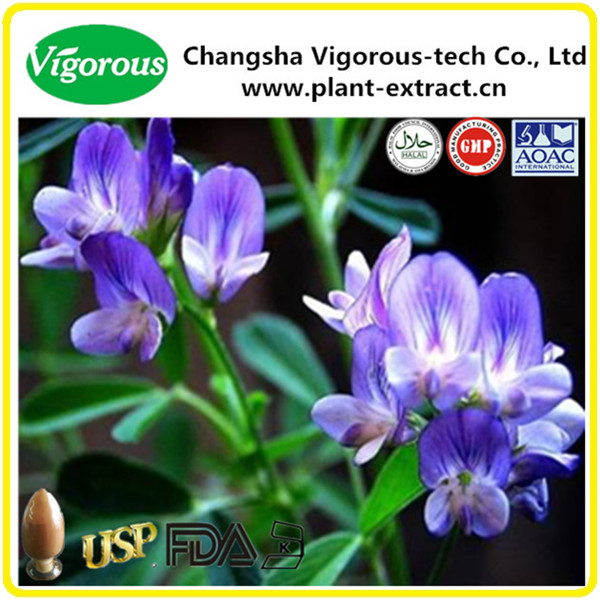- Extract Powder
-
- Fragrant Solomonseal Extract
- Elsholtzia Ciliata Extract
- Wormwood extract
- Red Radish Extract
- Arnica Extract
- Blue Lotus Extract
- Star Anise Extract
- Saxifraga Extract
- Red Bean Extract Powder
- Cistus Creticus Extract
- Luo Han Guo Extract Powder
- Saffron Extract
- Cranberry Extract
- Swertia Bimaculata Extract
- Ligustrum Extract
- White Willow Bark Extract
- Butterbur Extract
- Tongkat Ali Extract
- Grapefruit Extract
- Coix Seed Extract
- Carob Extract
- Lupinus Albus Extract
- Horse Chestnut Extract
- Kava Extract
- Dracocephalum Extract
- Olive Leaf Extract
- Lycoris Radiata Extract
- Schisandra Extract
- Scutellaria Extract Powder
- Semen Coicis Extract
- Sabah Snake Grass Extract Powder
- Phellinus Linteus Extract
- Lycium Extract
- Apple Extract
- Sophora Japonica Extract
- Lungwort Extract
- Acai Berry Extract
- Macleaya Cordata Extract
- instant green tea powder
- melissa officinalis extract
- dandelion extract
- ajuga turkestanica extract
- sesame extract
- rhodiola extract
- filipendula ulmaria extract
- chanterelle mushroom extract
- instant jasmine tea powder
- cistanche extract
- agaricus blazei extract
- agaricus bisporus extract
- agrocybe aegerita extract
- antrodia camphorata extract
- astragalus extract
- auricularia auricula extract
- bilberry extract
- black currant extract
- centella asiatica extract
- chlorella powder
- coprinus comatus extract
- cordyceps Extract
- coriolus versicolor extract
- desmodium extract
- Ecklonia Cava Extract
- epimedium extract
- eucommia extract
- evodia extract
- fenugreek extract
- fisetin extract
- flammulina velutipes extract
- fo-ti extract
- fucoxanthin extract
- ginkgo biloba extract
- ginseng extract
- grape seed extract
- graviola extract
- green coffee bean extract
- green tea l-theanine
- hawthorn extract
- hericium extract
- honeysuckle flower extract
- inonotus obliquus extract
- instant black tea powder
- kacip fatimah extract
- lovage extract
- luo han guo extract
- lutein extract
- lycium extract
- maitake mushroom extract
- mulberry extract
- muskroot extract
- olive leaf extract
- oolong tea extract
- phellinus linteus extract
- pine bark extract
- pomegrante extract
- polyporus umbellatus extract
- poria cocos extract
- pu erh tea extract
- pumpkin seed extract
- pleurotus eryngii extract
Best price for alfalfa extract powder
2016-07-29

Alfalfa seems to have originated in south-central Asia, and was first cultivated in ancient Iran. According to Pliny (died 79 AD), it was introduced to Greece in about 490 BC when the Persians invaded Greek territory. Alfalfa cultivation is discussed in the fourth-century AD book Opus Agriculturae by Palladius, stating:. "One sow-down lasts ten years The crop may be cut four or six times a year ... A jugerum of it is abundantly sufficient for three horses all the year ... It may be given to cattle, but new provender is at first to be administered very sparingly, because it bloats up the cattle. "Pliny and Palladius called alfalfa in Latin medica, a name that referred to the Medes, a people who lived in ancient Iran. The ancient Greeks and Romans believed, probably correctly, that alfalfa came from the Medes' land, in today's Iran. (The ancient Greeks and Romans also used the name medica to mean a citron fruit, once again because it was believed to have come from the Medes' land). This name is the root of the modern scientific name for the alfalfa genus, Medicago.
Most alfalfa cultivars contain genetic material from sickle medick (M. falcata), a crop wild relative of alfalfa that naturally hybridizes with M. sativa to produce sand lucerne (M. sativa ssp. Varia). This species may bear either the purple flowers of alfalfa or the yellow of sickle medick, and is so called for its ready growth in sandy soil. Traits for insect resistance have also been introduced from M. glomerata and M. prostrata, members of alfalfa's secondary gene pool.
Most of the improvements in alfalfa over the last decades have consisted of better disease resistance on poorly drained soils in wet years, better ability to overwinter in cold climates, and the production of more leaves. Multileaf alfalfa varieties have more than three leaflets per leaf, giving them greater nutritional content by weight because there is more leafy matter for the same amount of stem.
Alfalfa is high in protein, calcium and other minerals, vitamins in the B group, vitamin C, vitamin D, vitamin E, and vitamin K. The sun-dried hay of alfalfa has been found to be a source of vitamin D, containing 48 ng /g (1920 IU/kg) vitamin D2 and 0.63 ng g (25 IU/kg) vitamin D3. There is reference to vitamin D2 and vitamin D3 being found in the alfalfa shoot; this is awaiting verification.

